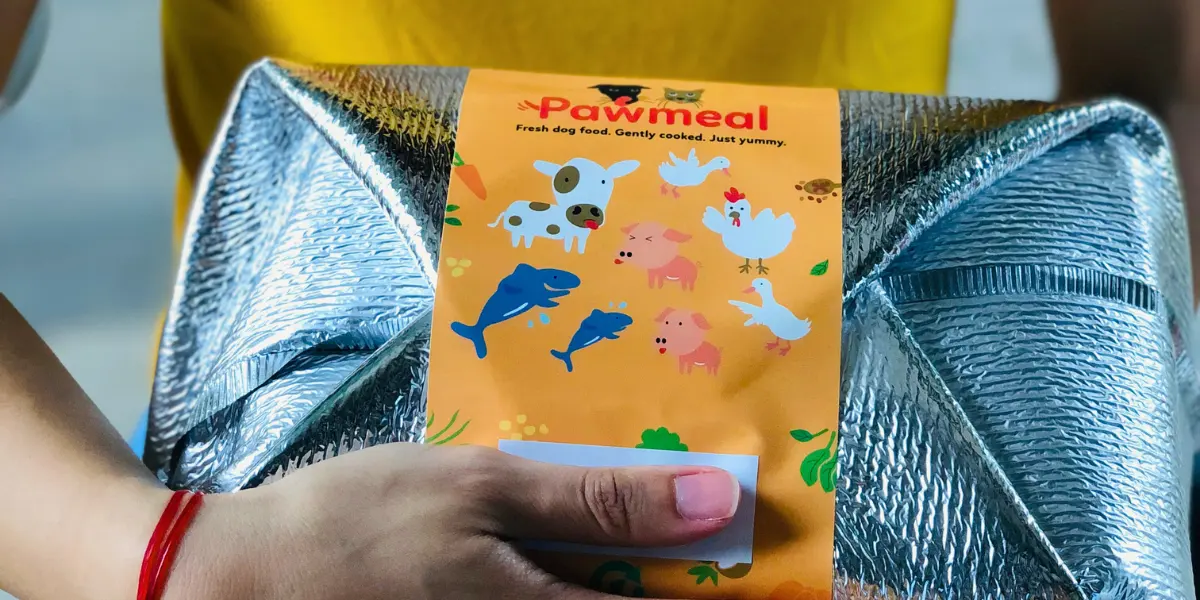


Testing for dog food allergies can be really a headache. 😪 When your dog has a food allergy, symptoms like itching and rashes may occur. You may try home remedies like this particular solution to identify the food cause. You may also have heard of hypoallergenic diets sold in the physical and online pet shops, which are not really permanent solutions. 🙅♀️ (We explain why towards the end of this article below).
However, if nothing works and your dog still displays allergic symptoms, perhaps it is time to consider seeking professional help and send your dog for possible food allergy tests.
But before you visit the vet or a pet nutrition expert, it is good to understand what the potential dog food allergy treatments they may propose, so you can make an informed choice together with them. Turning to hypoallergenic dog food may also be one of your options, but it cannot be a long term solution.
Your vet or professional may suggest one of these common treatments to test for allergies. They may prescribe based on the unique situation / condition of your dog. However, there is no single perfect test for allergies.
1. Blood test (serum testing)
2. Skin culture test
3. Bioresonance allergy test
4. Changing to hypoallergenic food
5. Elimination diet (dog food trial)
Blood tests have shown to be inaccurate at times, with quite a bit of false positive results. Your vet may also order a skin culture test if your dog has skin reactions. Both tests may take up to 1-3 months, which can be a long time for you. So you may still need home-based remedies as a day-to-day measure before the results are out. And these types of tests are not diagnostic, as they cannot prove to be 100% correct.
There are also bioresonance allergy tests for dogs if you want to know whether your dog is allergic to a particular food. And you can know the results immediately too. However, bioresonance allergy tests are not widely adopted in clinical use and has its doubters. Rara (our dog) did a bioresonance test and her results showed she is positive against chicken. Curiously, she has been doing absolutely fine with chicken in her diet all this while!
Some vets may propose to switch to hypoallergenic dog food (which can be kibbles, raw or cooked) that can address your dog’s current reaction. But this is not really a long term end-solution. Without knowing which food is the exact cause of allergy, you are effectively stuck with this particular hypoallergenic diet. What if one day your dog develops an allergic reaction towards this hypoallergenic food as well? (As dogs eat the same food over and over, the internal body system will slowly start to reject this same food because it recognises that it needs other nutrients and vitamins.)

A typical Hypoallergenic Dog Food
Another common dog food allergy treatment method is a food elimination trial. An elimination diet trial or dog food trial is the gold standard to test for and identify allergens and offending foods. It is also generally more affordable as compared to medical tests, and comparable to over-the-counter hypoallergenic diets. (Such as those from Royal Canin and Science Diet). But the main problem with this option is that it requires around 8 weeks to up to 6 months of consistent diet. And lots of pawrents fail to keep up with this feeding behaviour and also record their pets’ reactions on a daily basis. It is difficult for them to finish out the trial, because they may not see any results immediately and feel such a method may not bear fruit.
Despite all these, an elimination diet for your dog is still the way to go if you seek 100% confirmation of what causes reactions in your dog. You just need lots of patience, discipline and consistency.
When your vet or professional suggests you to conduct a food elimination trial (dog food trial), be prepared to make some changes to the way you feed your dog! The results from this trial can be way more accurate and definite, but takes time and discipline from the pawrent, aka you. This is because you will be key to carrying out the elimination diet over a reasonably long period.
Conducting an elimination diet for your dog will usually involve:
1) Switching to a novel protein plus 2-3 other ingredients for about 1 month. (Test diet)
2) If your dog’s condition improves, ‘re-challenge’ the original diet by feed this original diet again.
3) If your dog has a relapse again, an allergy with one of the ingredients in the original diet is confirmed.
4) Your dog has to go back to the test diet and wait for the condition to get better.
5) Then introduce 1 ingredient from the original diet at a time, until the ingredient that triggers the problem is found.
Short answer is no. And actually, there is no such thing as a 100% ‘sure-fire’ hypoallergenic diet. A hypoallergenic diet simply contain ingredients that are uncommon to your dog, so that allergic reactions may be minimised. Furthermore, uncommon does not necessarily mean hypoallergenic. It just means that your dog has not been exposed to it yet.
If you feed your dog a novel protein as its main diet, such as duck, kangaroo, lamb, or venison, take note: This does not prevent food allergies! What is more likely to happen is that if your dog develops an allergy, it will be to this novel protein instead of common ones like pork or chicken.
Tip: Do ‘reserve’ some novel proteins for the future if the need arises. So you still have options If or when there is a need to give a food trial to your dog.
It is also important to know that there is a distinction between having a food allergy and just a reaction due to food intolerance. In milder cases it can be just dog food sensitivity issues.
Lots of pet owners think that their pets may have food allergies, when their pet may only have mild food intolerance or greater sensitivity to the food.
Say for example, lactose intolerant. This does not mean that your dog cannot eat dairy products at all. This simply means that your dog can digest milk or dairy products to a little extent. Anything beyond the threshold will mean loose or soft stools. Your dog will not have any of the food allergy symptoms if it digests something that it is intolerant to.
| Food Intolerance | Food Allergy |
| Can eat, to a very limited extent | Cannot eat |
| Symptoms include soft or loose stools | Symptoms include dog scratching or itching, sneezing, hot spots, rashes, scaly skin, dropping fur, infections, behavioral changes |
| Example: lactose intolerant (still can eat, but only a little) | Example: Allergic to chicken (avoid, cannot eat) |
No account yet?
Create an Account